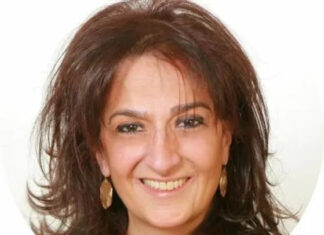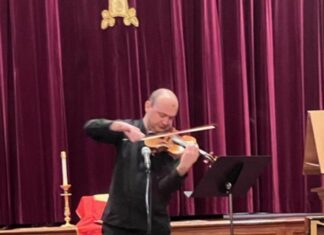By Carla Friedman
LOS ANGELES — Wandering through an antique shop in the seaside village of Cayucos, I stumbled upon an impeccably preserved little book, titled Scientific Air Possibilities With The Human, Zabelle Abdalian, 1934. Inspired by the life of a Madame Mary A. Harper, whose biography is detailed in the author’s introduction, this theosophical compilation of essays includes thoughts on the “beneficial effects of natural radium in the air,” esoteric views on body, mind, spirit, science, technology, theology and economics. Intrigued, I descended the sea washed wooden stairway, bought the book and walked — face to page, to a bench overlooking the Pacific.
How is it that a woman wrote about another woman in the feminist backwoods of 1934 America? How could anyone extol the health benefits of radium? How did the author amass such an interesting array of thoughts so similar to my own? With these questions in mind, I left the sea for Google.
The books she penned during her lifetime are held within University libraries throughout the country. In addition to Scientific Air Possibilities With The Human (re-issued in 1954 under the title The Amazing Power Within You), her published works include; “Bow in The Cloud” (1953), a play about world peace set in both new York and Burma; Thy Flame Is Blown (1952), a poetical biography of her father, killed during the massacre of Armenians in 1895; and SA PWH Prince Of The Air(1955), Zabelle’s autobiography. I then discovered a small handful of documents referencing her mother, Haiganoosh’s claims against the Turkish government, for the death of her husband, Nahabed.
My next find would come to be the door to open all. Via a letter written to the Armenian Observer in 2008, I found Zabelle’s great-niece, Pamela Barsam Brown. Her home is just a stone’s throw from where I received my degree in poetics and Buddhist studies in 1985. In my mind’s eye, I could literally walk to her house. (This small coincidence spoke to a feeling of interconnectedness that would return to me again and again throughout this journey). After the initial timidity of our first phone call, we have developed a lovely friendship centered around Aunty Zabelle, Abdalian family history and contemplations on what it feels like to be descendants of wounded lineage. Touched by my interest, Brown sent everything her great-aunt had ever published. With Zabelle’s door now open, the story of her unfolded, revealing a tale of survival, courage, faith, and a little bit of magic. I soon felt as if Zabelle herself had taken me by the hand, and was leading me through a confluence of history, lineage and mystic memory.
Zabelle Abdalian was born October 6, 1886, at the foot of the Taurus Mountains in Gurin, Turkey. It was during this time that her father, Dr. Nahabed Y. Abdalian (a naturalized US citizen who had received his Doctorate in Medicine from New York Medical College in 1879 and was the first ordained Armenian-American medical missionary to Turkey), had returned to the village of his birth to care for the people of his homeland. Her life in Gurin, with her father, mother and four brothers and sisters was a happy one. Yet In 1895, Zabelle’s world darkened when her beloved father was killed during the massacre of the Armenians. The Turks burned the Abdalian home, looted their belongings and imprisoned the family. Zabelle’s infant brother died from exposure and starvation. With the assistance of the United States government, the Abdalian family was granted safe passage to America in 1896. Zabelle, with bright mind and sensitive spirit, had a sense of the mystical from a young age. These sensibilities of spirit and imagination helped to carry her across the sea to a new life.









